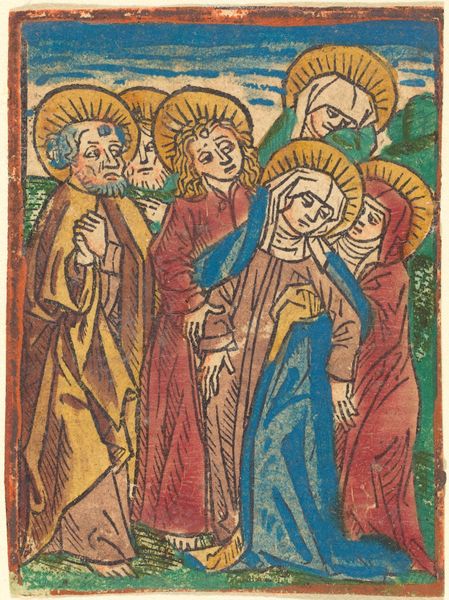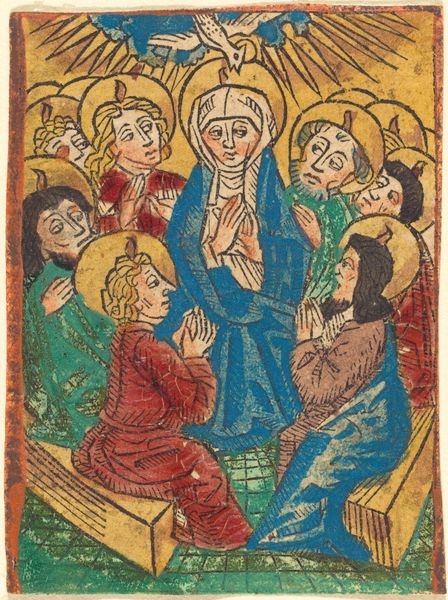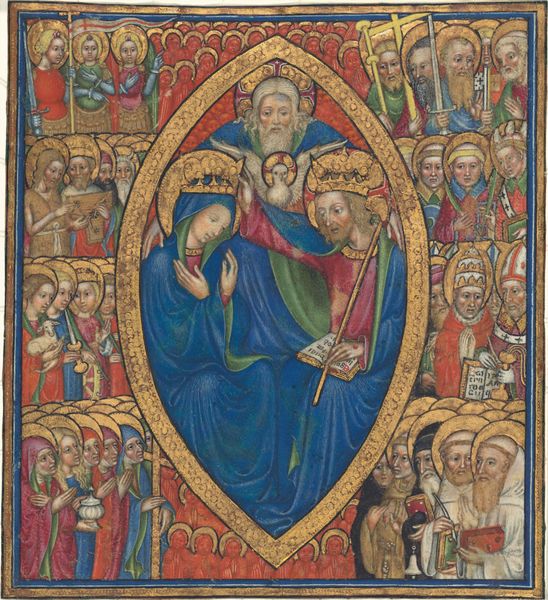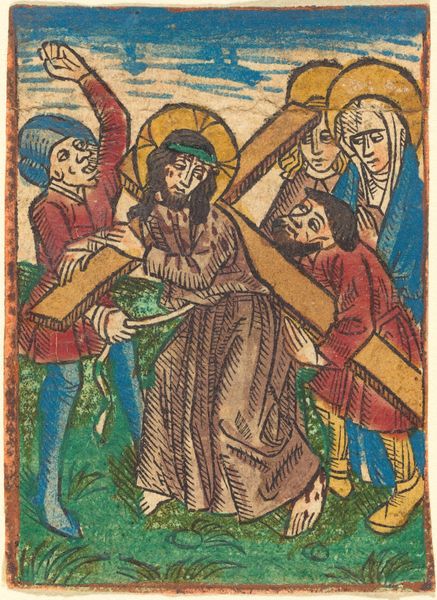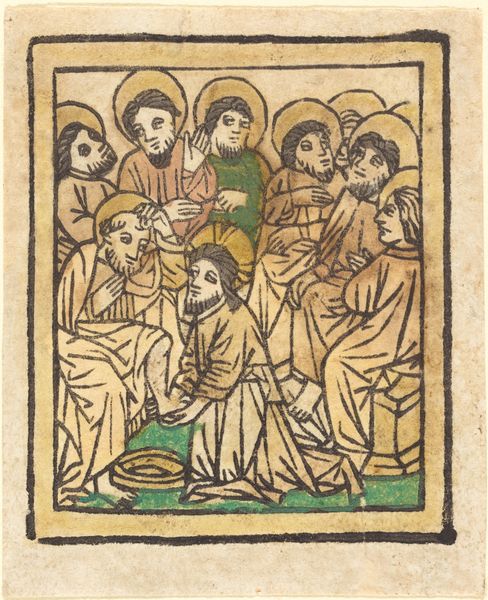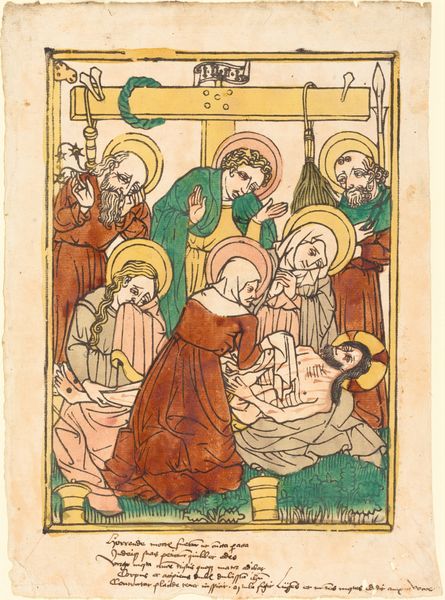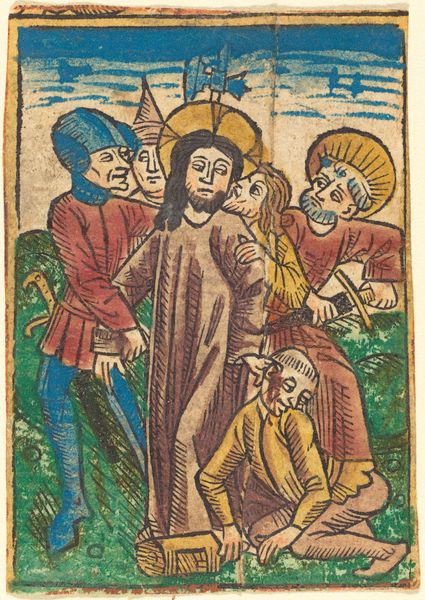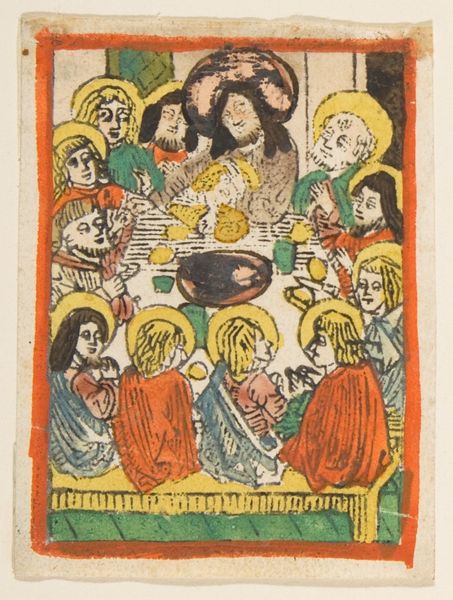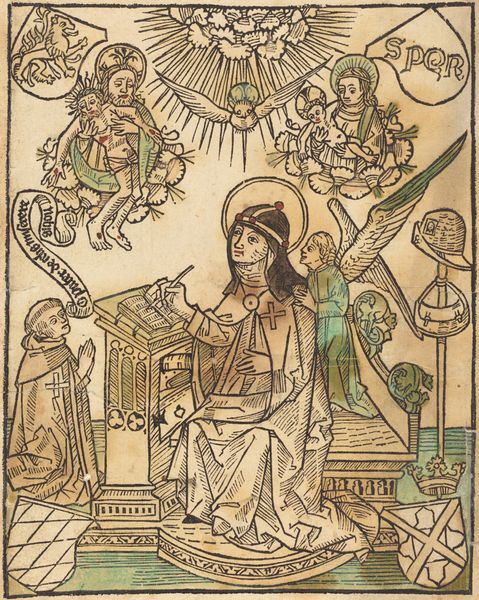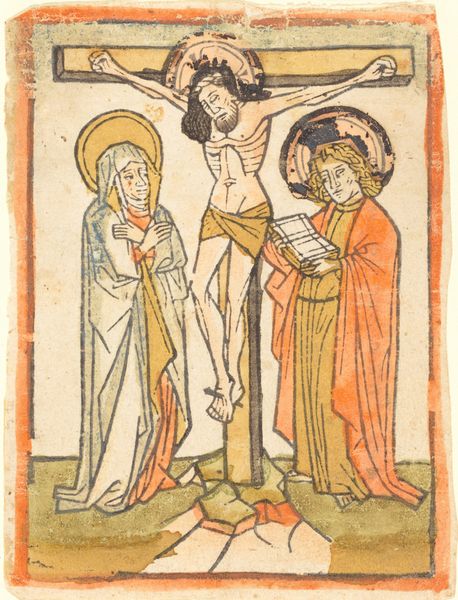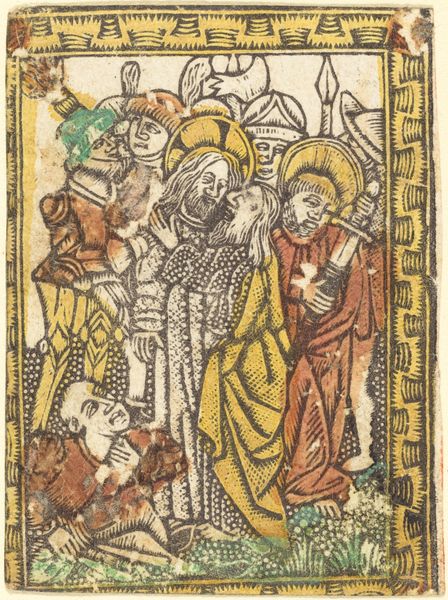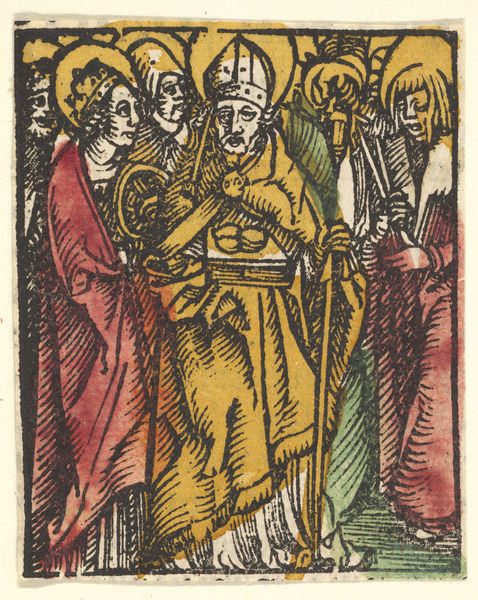
tempera, print, woodcut
#
medieval
#
narrative-art
#
tempera
# print
#
stain glass
#
figuration
#
woodcut
#
naive art
#
history-painting
#
watercolor
Copyright: National Gallery of Art: CC0 1.0
Editor: This is an early print showing the "Ascension", made around 1490, done with tempera on woodcut. I am immediately struck by how raw the emotion feels, even with the limited color palette and somewhat naive style. What stands out to you about the visual language being used? Curator: The most prominent aspect, I think, is the employment of what we might term 'visual shorthand.' The use of the halo, for instance. What does that symbol immediately communicate to you? Editor: Authority, sacredness…divinity, basically. It feels instantly recognizable, even today. Curator: Precisely. And notice the direction of the gazes, all leading upwards, beyond the frame, which acts almost as a psychological pull, directing our own gaze towards the heavens. Observe, too, the use of scale: Jesus is literally ascending; but, what *remains* visible? Just his feet… How is the artist deploying what remains of Christ? Editor: Humility? Reminder of Christ's human presence despite the ascension? Even loss? The figures below seem so stunned. Curator: Loss perhaps, but also witness. Consider the repetition of upward reaching hands. An echo through history—they *witnessed*. And, through the very act of witnessing, ensure the *story* and *memory* survive to reach us. Editor: I see, so it’s less about perfect realism and more about conveying the enduring power of faith and memory, a very moving experience of continuity. Curator: Exactly. Art then became the vehicle. Now, consider how different the memory would feel if presented without these loaded cultural objects.
Comments
No comments
Be the first to comment and join the conversation on the ultimate creative platform.
